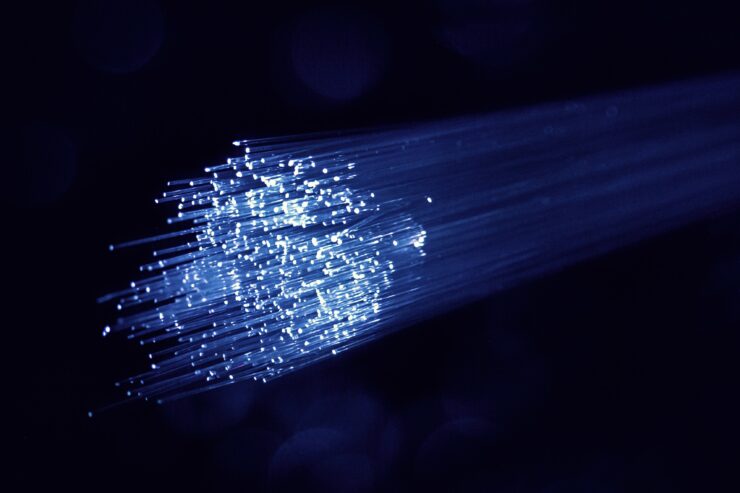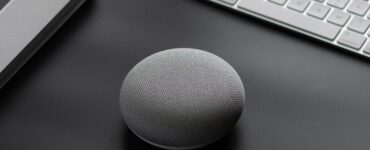When it comes to internet connectivity, there are two prominent technologies that dominate the scene: traditional cable and advanced fiber-optic. Each option comes with its own set of advantages and drawbacks, and the choice between them can have a substantial influence on your online interactions. In this comprehensive guide, we’ll explore the differences between cable and fiber-optic internet. We’ll delve into factors like speed, reliability, infrastructure, cost, latency, security, and more to help you make an informed decision about the best option for your needs. Upon concluding this article, you’ll possess a more defined grasp of the advantages and disadvantages associated with cable and fiber-optic internet. Armed with this information, you’ll be equipped to make a well-informed choice for your home or business.
Technology Overview
Cable and fiber-optic internet are built on fundamentally different technologies. Cable internet relies on the same coaxial cables that transmit cable television. These cables have been around for decades and are known for their robustness. However, cable internet operates on a shared network, meaning your connection’s speed can decrease during peak usage hours when many users share the same network resources. On the flip side, fiber-optic internet employs extremely fine strands of glass or plastic fibers to convey data via light pulses. This technology offers incredible speeds and is known for its immunity to interference. Fiber-optic networks provide a dedicated line for each user, ensuring consistent speeds, even during peak times.
Internet Speed
The primary distinguishing factor between cable and fiber-optic internet is speed. Fiber-optic internet offers blazing-fast speeds, reaching up to 1 Gbps (1,000 Mbps) or even higher. The remarkable speed stems from the technology’s capability to transmit data at the speed of light, rendering it perfect for high-demanding tasks such as 4K video streaming, online gaming, and sizable file downloads. Cable internet, while no slouch, is generally slower in comparison. Advertised speeds vary from 25 Mbps to 1,000 Mbps, depending on your provider and plan. While these speeds are suitable for everyday internet activities, they may struggle with multiple high-bandwidth tasks simultaneously. Fiber-optic’s superior speed makes it the clear choice for those who require the highest data rates and minimal lag.
Network Reliability
Reliability is a crucial consideration when choosing an internet connection. Fiber-optic internet is celebrated for its exceptional reliability. Its resistance to external factors, such as inclement weather and electrical interference, sets it apart. Even during peak hours, when many users are online simultaneously, fiber-optic networks remain steadfast in delivering consistent speeds. This robust reliability makes it an appealing choice for both residential and business users who rely on a dependable internet connection. While cable internet also offers reasonable reliability, it can be susceptible to slowdowns during peak usage periods. Additionally, shared infrastructure leaves cable networks more vulnerable to localized outages. These outages can be frustrating, especially when they occur during critical online tasks. Fiber-optic’s unparalleled dependability ensures your internet remains stable and consistent even under adverse conditions.
Infrastructure And Availability
Cable internet has the edge when it comes to infrastructure and availability. Coaxial cables are ubiquitous, making cable internet widely accessible across numerous regions, including rural areas. This extensive infrastructure ensures that cable internet is a reliable choice for many households. On the other hand, fiber-optic internet’s availability is more limited. It is primarily accessible in urban and suburban areas, with availability expanding gradually. Rural regions often lack fiber-optic infrastructure due to the substantial investment required to lay down dedicated fiber lines. Therefore, the choice between cable and fiber-optic may partially depend on your location. Cable’s extensive reach makes it a feasible choice for those in areas with limited options.
Price and Affordability
Price plays a significant role in selecting an internet connection. Generally, cable internet is more budget-friendly than fiber-optic alternatives. This cost-effectiveness makes cable internet an attractive option for price-conscious consumers looking to maintain a reliable internet connection without stretching their budgets. In contrast, fiber-optic internet typically comes with a higher price tag due to its exceptional speed and reliability. This increased cost reflects the technology’s investment in infrastructure and maintenance, ensuring a premium internet experience. While fiber-optic may be pricier, it is an excellent choice for those who prioritize the advantages it offers, considering it as an investment in seamless internet connectivity.
Latency And Gaming
Low latency is critical for online gaming, where split-second reactions can make or break your gaming experience. Fiber-optic internet enjoys a clear advantage in this aspect. Its minimal latency ensures that your gaming commands are executed with almost no delay, providing a highly responsive gaming experience. This is especially crucial for competitive gaming, where timing is everything. While cable internet is suitable for casual gaming, it may exhibit slightly higher latency in comparison to fiber-optic connections. The increased latency can lead to a less responsive gaming experience, particularly in fast-paced games. For avid gamers who prioritize responsiveness and competitive gameplay, fiber-optic is the superior choice to ensure an edge over the competition.
Security And Privacy
Security and privacy are essential considerations in today’s digital age. Both cable and fiber-optic internet connections can be secure, but there are nuances to consider. Fiber-optic internet is less susceptible to signal interception, as it transmits data in the form of light through the fiber strands. This makes it more challenging for external parties to eavesdrop on your internet traffic. In contrast, cable internet uses coaxial cables, which could potentially expose your data to interference or interception, especially if you share cable lines with neighbors in apartment buildings or densely populated areas. To enhance security and privacy, users of both cable and fiber-optic internet should consider implementing additional measures such as firewalls, encryption, and secure browsing practices.
Scalability And Future-Proofing
When choosing an internet connection, it’s crucial to take scalability into account. Fiber-optic internet inherently offers more scalability compared to cable. Its impressive speeds meet the demands of emerging technologies and increasing bandwidth requirements. This scalability ensures that your network can adapt and accommodate future advancements in internet technology. Cable connections may require infrastructure upgrades as your internet needs grow. While cable internet can meet the requirements of many households, it may reach its limits when it comes to data-intensive applications. Fiber-optic internet is a future-proof choice for those who anticipate increasing bandwidth requirements, making it suitable for households and businesses that prioritize adaptability and long-term value.
Installation And Setup
The ease of installation and setup is another aspect to consider. Cable internet is known for its relatively straightforward installation process, which often involves using existing coaxial cables. This simplicity is appealing to users who prefer a hassle-free setup without the need for extensive modifications to their homes or offices.In contrast, fiber-optic internet installation can be more complex. It usually requires the installation of dedicated fiber lines to your location. This process may involve more time and coordination, potentially impacting your choice based on your specific preferences and home infrastructure. It’s essential to assess your comfort with the installation logistics and potential disruptions when choosing between cable and fiber-optic internet.
Environmental Impact
Fiber-optic technology has a lower environmental impact. It consumes less power and produces fewer carbon emissions compared to cable. If environmental sustainability is a priority, fiber-optic may align better with your values. With a comprehensive grasp of these aspects, you can make a knowledgeable decision tailored to your specific requirements, location, and financial considerations. Whether you prioritize speed, reliability, affordability, or sustainability, cable and fiber-optic internet have distinct advantages and limitations to consider.




